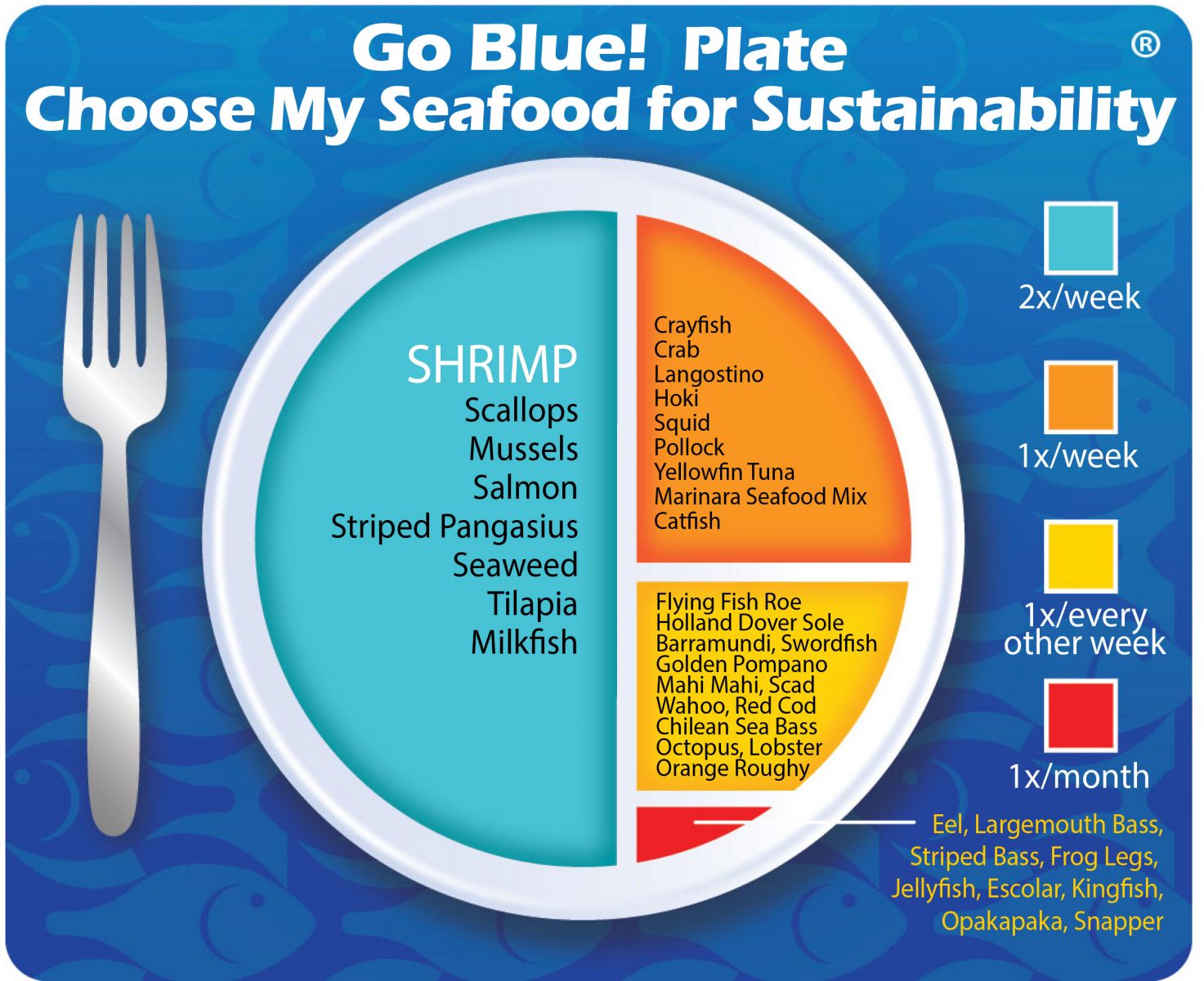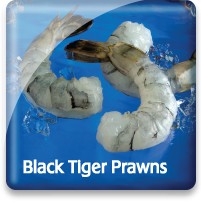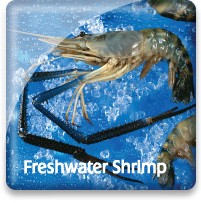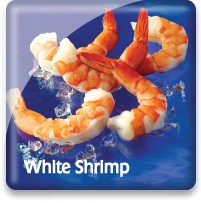
Oregon Pink Shrimp

Market Name: Eating QualitiesCooked Oregon Pink Shrimp is a sweet flavored meat with a medium soft texture that is perfect for making cold shrimp cocktails.
   |
Description & CharacteristicsOregon Pink Shrimp is found in the Pacific Ocean coastal waters from the Canadian border to the central coast of California. Nearly 75% of the entire catch takes place off the Oregon coast. The season runs from April 1st to October 31st. Total yearly landings are primarily dependent upon natural environmental factors rather than fishing pressures. El Niño is one such natural occurrence which can cause a decrease in abundance. Catches are variable year-to-year ranging from highs of nearly fifty million pounds to lows of twenty-five million. The fishery is relatively new having started in 1957 using single nets and has advanced over the years to using modern double-rigged otter trawls with BRDs (bycatch reduction devices). Oregon shrimp trawl boats generally work between 75 and 125 fathoms (450 to 750 feet) on mud and muddy-sand substrates that are located 15 to 25 miles offshore. Trips usually average 3 days at sea. The fishery has been certified as sustainable since 2008 by the Marine Stewardship Council (MSC). In addition to being fished responsibly, Oregon Pink Shrimp is highly nutritious, fully cooked, and ready to eat.Oregon Pink Shrimp is processed by cooking and then peeling the whole raw shrimp resulting in meat that is graded to 150-250, 250-350, and 350-500 count per pound. Oregon Pink Shrimp’s domestic market is primarily along the west coast of the United States while significant quantities are exported to Europe and Asia. The product is sold in IQF form and is typically packed 4/5#. This delicious shrimp is in high demand by both restaurants and grocery stores. Oregon Pink Shrimp are protandrous hermaphrodites – animals that undergo a change of sex, starting out as males and then becoming females in the final years of their lives. They may reach 5.5 inches in total length but the average catch size is about 4 inches. They have a life span of only four years and one and two year olds are the most common ages found in the commercial catch.
Oregon Pink Shrimp are managed primarily using season, vessel entry, and shrimp size restrictions. Oregon fishermen are required to deliver shrimp that average 160 per pound or larger (lower count). In order to maintain the current MSC sustainability certification an additional management scheme will need to be incorporated into the existing practices for the state of Oregon Pink Shrimp fishery. This augmentation is called “Target and Limit” which means that every season a minimum stock or biomass is determined that the shrimp fishery doesn’t want to fall below and if surveys from landings taken at near mid-season show that this is happening, then the season will be limited by shortening or closing the season altogether. This fishery is a model of how governments and NGOs can work together to further drive sustainability. Recently, this fishery has been recommended by Monterey Bay Aquarium's Seafood Watch program as a "Best Choice" for environmentally concerned seafood consumers.
Oregon Pink Shrimp start out their lives as males and then later turn into females.
Other Resources |
Handling Instructions for Oregon Pink Shrimp meat
Our fully cooked and peeled Oregon Pink Shrimp meat is offered in IQF form (individually quick-frozen). Frozen product should be stored at or below 0°F (-18°C) and then thawed properly when ready to consume. The frozen shelf life is 18 months. Links to proper seafood handling instructions: NOAA - Fish Watch: Handling Seafood and A Consumer Guide to Safe Seafood Handling.
Thawing Oregon Pink Shrimp meat
Thawing is accomplished by placing the product in a plastic container or bag and placing in the refrigerator (33 to 39°F) for 12-24 hours. This method is preferred because it helps retain the natural juices and flavors. Shrimp that is not consumed promptly after thawing can be stored refrigerated between 33 and 39°F and then needs to be consumed totally within 2-3 days.
Important Instructions for Oregon Pink Shrimp meat
Consuming Oregon Pink Shrimp immediately after proper thawing yields the best quality.
Cooking Tips
Oregon Pink Shrimp can be consumed chilled or in various heated preparations. Links to cooking tips and recipes: Greek Pasta Salad with Shrimp and Olives and Baby Shrimp Scampi and Angel Hair Pasta
USA
The United States of America has over 95 thousand miles of coastline, ranks fourth in the world in wild capture fisheries and thirteenth in aquaculture production. The wild capture fisheries is dominated by Alaska pollock and followed by menhaden, salmon, flatfish, and cod. After these wild caught finfish species which comprise 84% of the entire wild catch, the remaining capture fisheries primarily consist of crab, shrimp, and shellfish. Aquaculture production in the U.S. is comprised of roughly 70% freshwater and 30% marine farms. Freshwater aquaculture is dominated by catfish and followed by trout production while the marine aquaculture in comprised of 65% shellfish (clams, oysters, & mussels), 25% salmon, and 10% shrimp. At present, aquaculture represents 5% of the total U.S. seafood production.
The long-term sustainability of U.S. wild fisheries has been the goal of the 1976 Magnuson-Stevens Act. The National Marine Fisheries Service manages all activities to achieve this goal and at this time the majority of wild capture fisheries in the U.S. are sustainable. In 2011, the U.S. Department of Commerce and the National Oceanic and Atmospheric Administration released policies that promote the accelerated development of marine aquaculture. Both wild fisheries and aquaculture in the United States are currently well managed for sustainable growth.
Go Blue! Seafood Sustainability Spectrum*Click here for an explanation of our Sustainability Spectrum Sustainability AssessmentThe history of the Oregon Pink Shrimp has revealed a fishery that has been well managed in terms of preventing overfishing of the biomass. This was accomplished by establishing and enforcing seasonal and catch size regulations. Even though the fishery has endured for over 50 years without major negative impact to the shrimp biomass, other sustainability considerations such as bycatch and benthic habitat damages were not being addressed. At present, improvements in bottom trawling techniques and technology are addressing these concerns. Net mesh size modifications , bycatch reduction devices (BRDs), improved trawling techniques have helped mitigate the catching of unwanted and endangered or threatened species and disruption to benthic habitats. Since 2008, the Oregon Pink Shrimp fishery has been MSC certified. The Monterey Bay Aquarium's Seafood Watch list now recommends this shrimp as “Best Choice”.

Environmental Impact Level: Low to ModerateOverfishing and illegal fishing have not been manifested throughout the history of this fishery. Modern fishing techniques employed today reduce benthic impacts and bycatch. A recent innovation implemented in the Oregon Pink Shrimp trawling fishery uses net attached LED lights to guide unwanted fish such as the threatened Pacific eulachon (smelt) to safely exit before the nets are raised. This has greatly reduced unwanted bycatch and advanced the sustainability of this fishery.
Sustainability Improvements NeededImprovements are needed in scientific research and data collection to better determine when natural variations will impact population abundance and structure, so that fisheries may be better managed.
Actions that Sea Port is UndertakingSea Port is excited to offer our customers one of the most sustainably resilient and managed wild caught shrimp that is a nutritious and great tasting delicacy. Sea Port will encourage consumers to choose Oregon Pink Shrimp at a much higher frequency compared to other seafood that have not yet progressed as far toward improved sustainability. Sea Port will enthusiastically support this fishery as it strives for even further improvements in sustainably harvesting this truly gourmet seafood.We created the sustainability assessments for each of our seafood items in order to reveal the existing and potential environmental impacts and risks that are associated with producing them for human consumption. This allowed us to establish the starting position for each of our seafood items along our progressive Go Blue! Seafood Sustainability Spectrum®. These assessments are only a single snapshot in time and because of this, we will continue to assess and update the critical sustainability needs associated with our supply sources and issue updates to the Go Blue! Seafood Sustainability Spectrum® as needed. There is a growing global awareness for the need to assure the sustainability of farmed and wild caught seafood and because of this; all around the world positive changes are rapidly occurring at all levels of the seafood supply chain. We will continue to spread this growing awareness and work with our many industry partners to improve the sustainability of all seafood, which we believe is the ideal protein of choice to feed an ever growing world population. Our Go Blue! Seafood Sustainability Spectrum® serves as our compass and yardstick as we strive to move all our products forward to becoming more sustainable. Please join us in this committed quest and Catch Our Wave® to sustainability by choosing a diverse variety of responsibly produced seafood as part of your diet.
|







